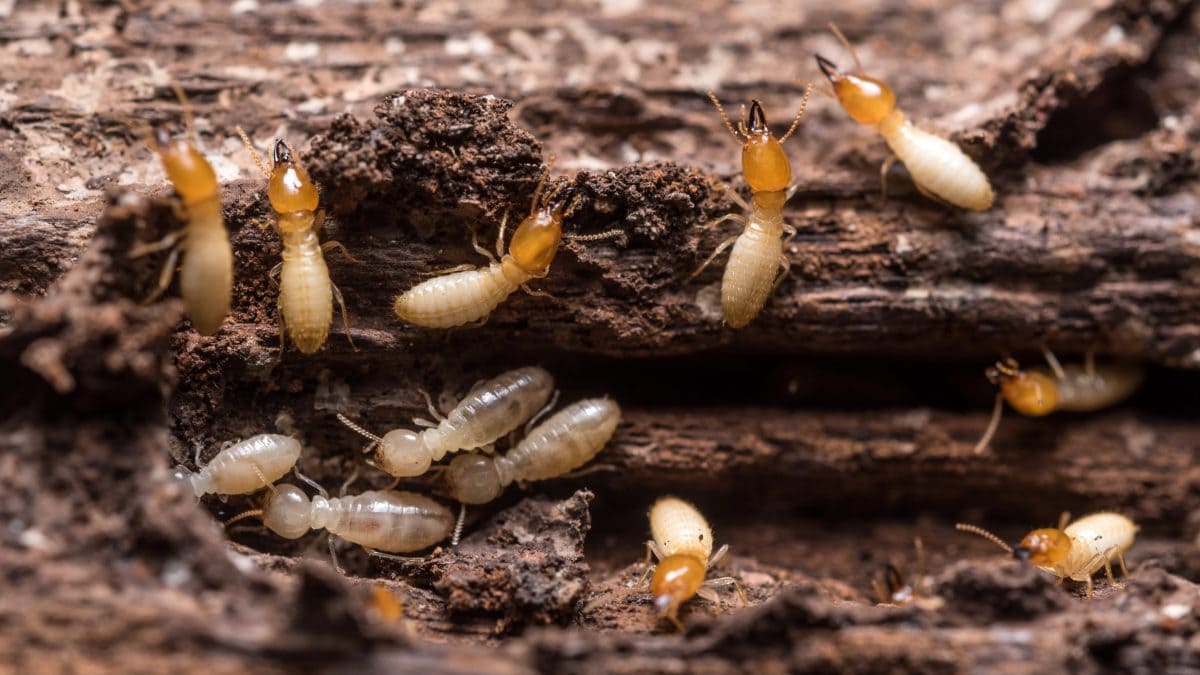Termites are social insects whose members of the colony perform different jobs in the colony according to their caste (breeders, workers or soldiers). Knowing how termites reproduce can help you learn how to control them.
A typical termite colony will have only one pair of breeders: the king and queen. The king and queen of termites produce pheromones, an aroma that indicates nesting and mating, which spread throughout the colony to prevent worker termites from becoming reproductive adults. The queen is responsible for starting the colony and laying all the eggs until the colony reaches a certain size. It will then allow some of the immature termites to become secondary queens that lay the extra eggs needed to keep the colony thriving. The king and queen can live between 15 and 25 years. If the queen or king dies, or there is an increase in the size of the colony, the concentration of pheromone levels and the type change. Then, one or more workers will molt and become breeding or winged termites.
HOW DO TERMITES REPRODUCE?
Subterranean termite colonies mature in about six to seven years, at which point winged termites (swarms) are produced. Termite swarms can be brown-black to pale reddish-brown depending on the species and about 1/4″ to 3/8″ long, with pale or smoke-gray wings. During early spring, swarms of males and females nest in a mating flight with thousands or even millions of other winged termites.
Swarms are bad fliers, so they usually fly only a few meters from their former nest. However, the wind can carry them great distances. Winged termites often land on the roofs of buildings and move inward. Many of the winged ones are eaten by frogs, lizards, birds, or spiders during this mating flight, so relatively few winged survive to find nesting sites, breed, and form new colonies. Termite colonies produce many winged ones, so that at least a few survive the mating flight.
Swarms of males and females pair up during mating flight. The female alate releases a pheromone to attract a male to nest and mate. Winged termites shed their wings soon after landing and spend the rest of their lives without flying. The pair of male and female termites look for a nesting site near the moist soil.
Before mating, the new king and queen dig into the ground, digging a royal chamber in the wet ground. The king and queen of termites seal their nest with soil, saliva, and their own waste. Then the king and queen mate.
After mating, the new king and queen spend the rest of their lives underground feeding on the worker termites. The new queen lays her first batch of six to 12 eggs within a few days or weeks of mating, establishing a new termite colony. A mature queen can lay thousands of eggs each year. As the colony increases in size, the queen may allow more broodstock to help produce enough workers to feed the colony. Mature termite colonies typically contain 60,000 to 1 million termites.
Termites what is their habitat, the habitat of termites are places with humid climates.
If you see winged termites in or near your home, you probably have a termite colony nearby. That means it’s time to call your termite specialist for a termite inspection and treatment.


